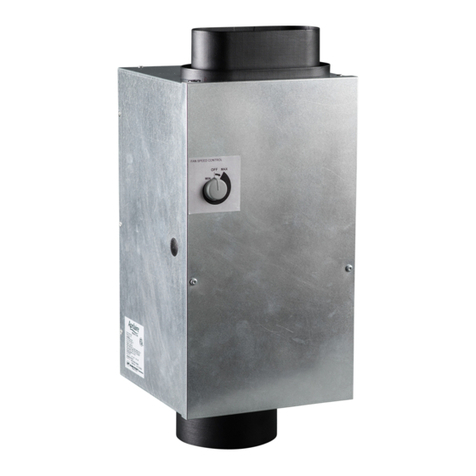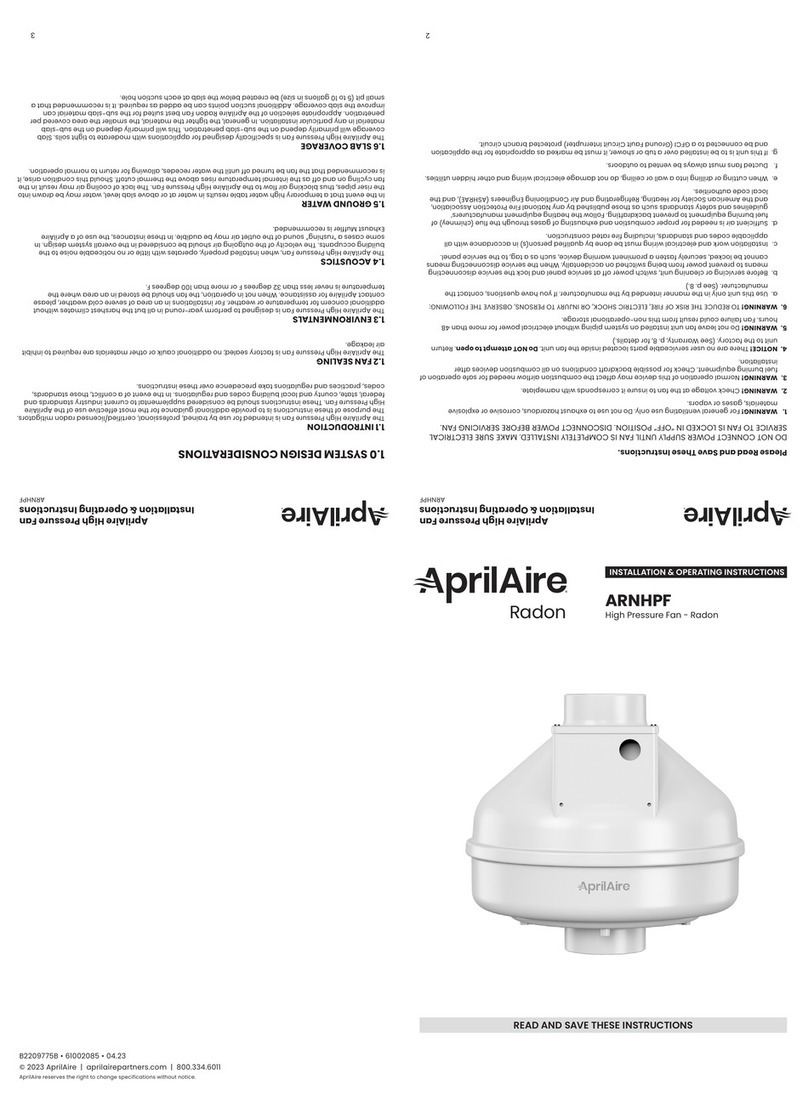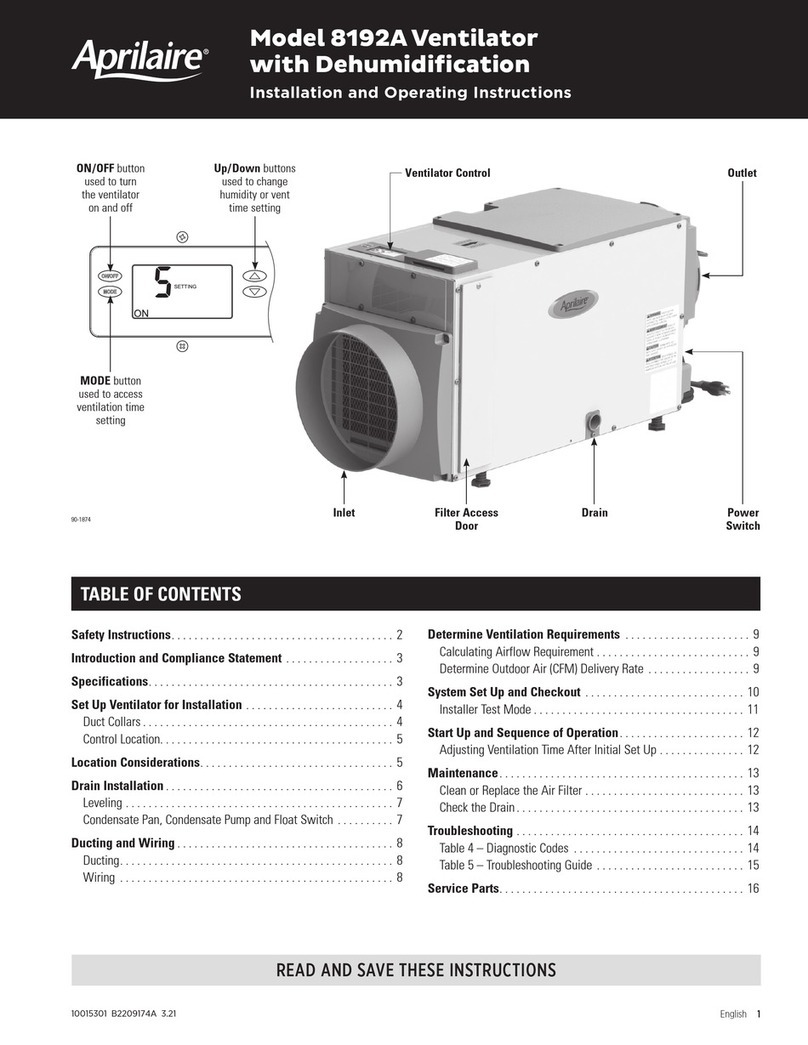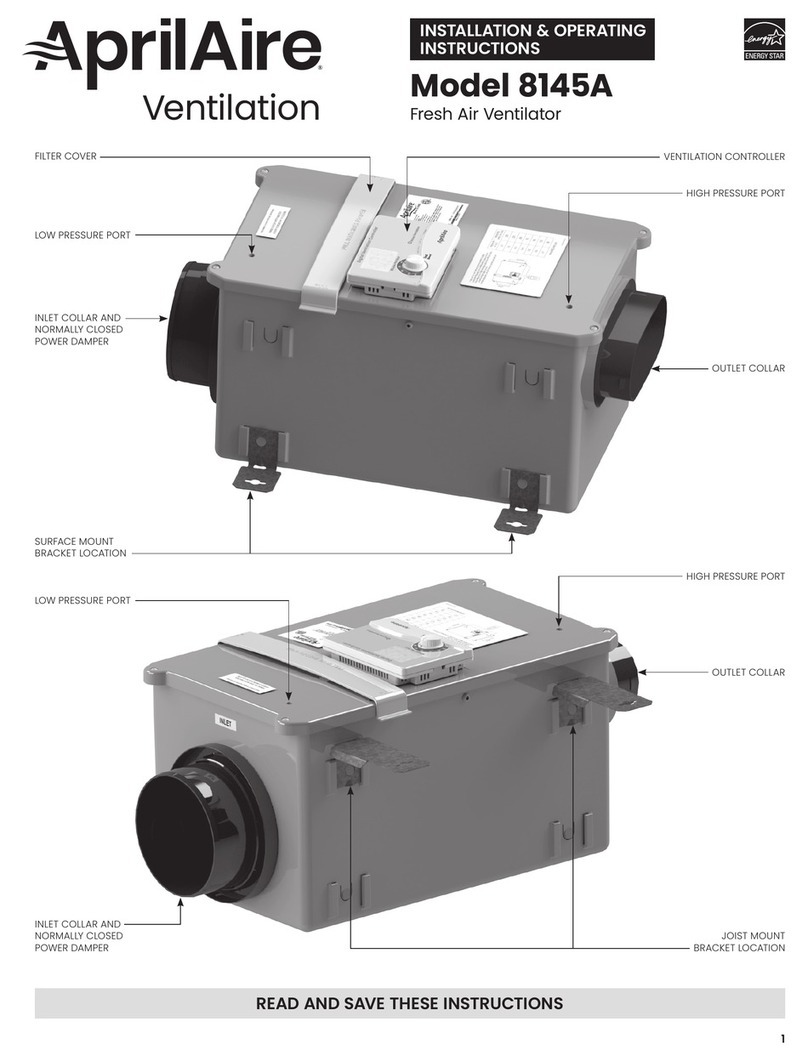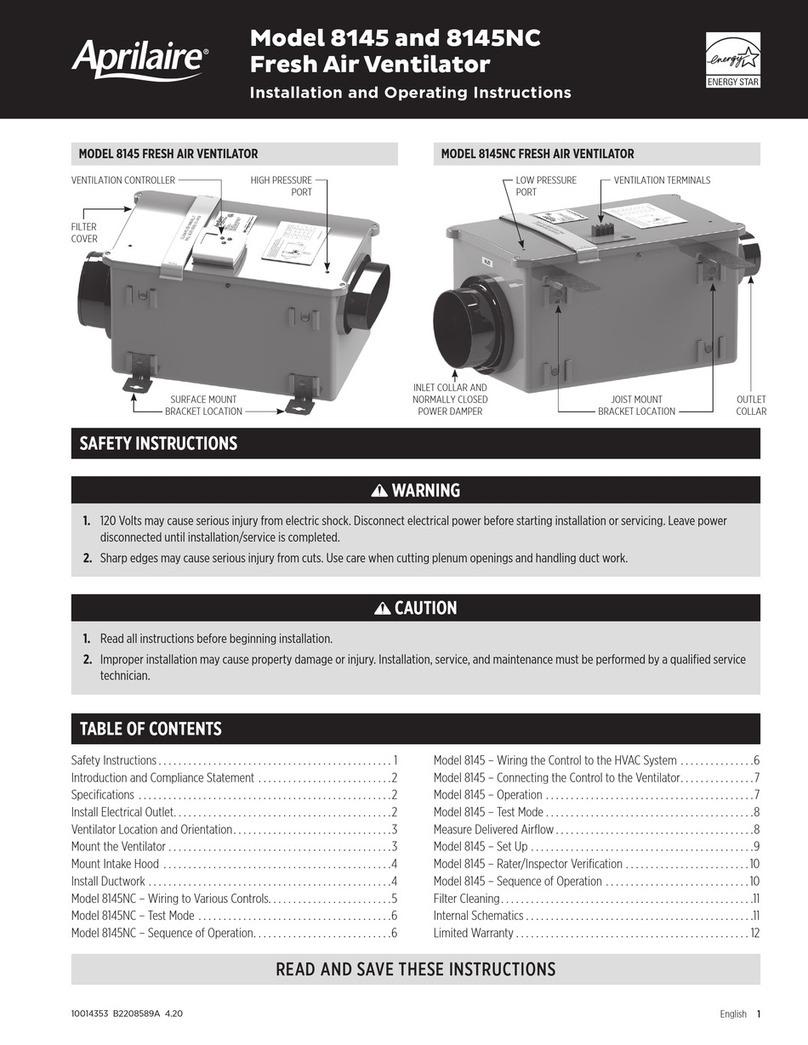
LIMITED WARRANTY
WARRANTY REGISTRATION
Your Research Products Corporation Aprilaire®Fresh Air Ventilator is expressly warranted for five (5) years from date of installation to be free from defects in materials or workmanship.
Research Products Corporation’s exclusive obligation under this warranty shall be to supply, without charge, a replacement for any component which is found to be defective within such
five (5) year period and which is returned not later than thirty (30) days after said five (5) year period by you to either your original supplier or to Research Products Corporation, Madison,
Wisconsin 53701, together with the model number and installation date of the ventilator.
THIS WARRANTY SHALL NOT OBLIGATE RESEARCH PRODUCTS CORPORATION FOR ANY LABOR COSTS AND SHALL NOT APPLY TO DEFECTS IN WORKMANSHIP OR MATERIALS
FURNISHED BY YOU INSTALLER AS CONTRASTED TO DEFECTS IN THE VENTILATOR ITSELF.
IMPLIED WARRANTIES OF MERCHANTABILITY OR FITNESS FOR A PARTICULAR PURPOSE SHALL BE LIMITED IN DURATION TO THE AFORESAID FIVE YEAR PERIOD.RESEARCH
PRODUCTS CORPORATION’S LIABILITY FOR INCIDENTAL OR CONSEQUENTIAL DAMAGES, OTHER THAN DAMAGES FOR PERSONAL INJURIES, RESULTING FROM ANY BREACH OF THE
AFORESAID IMPLIED WARRANTIES OR THE ABOVE LIMITED WARRANTY IS EXPRESSLY EXCLUDED.THIS LIMITED WARRANTY IS VOID IF DEFECTS(S) RESULT FROM FAILURE TO HAVE
THIS UNIT INSTALLED BY A QUALIFIED HEATING AND AIR CONDITIONING CONTRACTOR.IF THE LIMITED WARRANTY IS VOID DUE TO FAILURE TO USE A QUALIFIED CONTRACTOR,
ALL DISCLAIMERS OF IMPLIED WARRANTIES SHALL BE EFFECTIVE UPON INSTALLATION.
Some states do not allow limitations on how long an implied warranty lasts or the exclusion or limitation of incidental or consequential damages so the above exclusion or limitations
may not apply to you.
This warranty gives you specific legal rights and you may also have other rights which vary from state to state.
Visit us on-line at www.aprilaire.com to register your Aprilaire product.If you do not have on-line access, please mail a postcard with your
name, address, phone number, email address, product purchased, model number, date of purchase and dealer name and address to:
Research Products Corporation, P.O. Box 1467, Madison, WI 53701
Your Warranty Registration information will not be sold or shared outside of this company.
TROUBLESHOOTING
TABLE 4 – Troubleshooting Guide
Symptom Possible Reason Correction
Ventilator and display on
control does not turn on.
No power to the control.• Wire the control to the HVAC system as shown in the wiring diagrams
on page 5.
• Turn on power to the HVAC system.
Ventilator does not turn on,
but display on control is on.
No power to the outlet into
which the ventilator is plugged.
• Turn on switch that controls outlet.
E1 shows on display.RH sensor error.• Turn the control knob to Test/Reset position.If the error recurs,
replace the control.
E2 shows on display.Control knob error.• Turn the control knob to Test/Reset position.If the error recurs,
replace the control.
E3 shows on display.Outdoor temperature sensor
failure.
• Make sure both black wires of the sensor are connected to the ODT
terminals.
• If connected, disconnect and measure the resistance across the black
wires.If it is open or shorted, replace sensor.
Air is blowing out of the
intake hood.
Backdraft damper is open.• Make sure the unit is mounted in the proper orientation – outlet
cannot point down.
• Remove the oval outlet collar and rotate it 180° so that it closes when
the ventilator turns off.
“r#” (where # is a number)
shows on the display.
Left in test mode.• Turn knob to time setting.
aprilairepartners.com
P.O. Box 1467
Madison, WI 53701-1467
800.334.6011 F: 608.257.4357
©2021 Aprilaire. Printed in USA.
10010906 B2206530E 12.21
8
